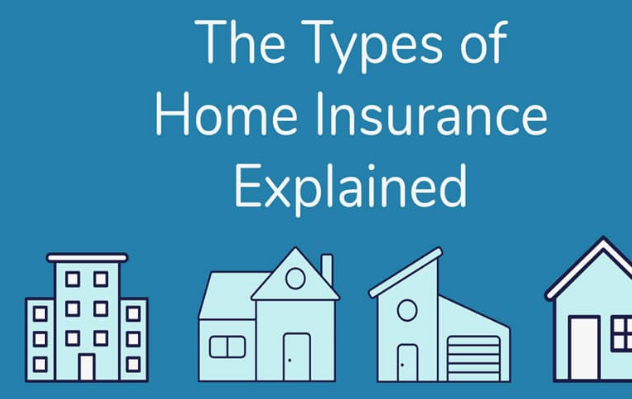When purchasing home insurance, one of the key considerations is whether you are insuring a condo or a single-family home. Although both types of properties require insurance coverage, the policies for each vary significantly due to the differences in ownership structures, risk factors, and liability concerns. Understanding how home insurance policies differ for condos versus single-family homes can help homeowners make informed decisions about the right coverage for their property.
This article will explore the key distinctions between condo and single-family home insurance, including what is typically covered, what isn’t, and the factors to consider when choosing the appropriate policy for each type of home.
1. Understanding Condo Insurance vs. Single-Family Home Insurance
Condo Insurance (also known as HO6 insurance) is specifically designed for condominium owners. This type of insurance typically covers the interior of the condo unit and the homeowner’s personal belongings, as well as liability for accidents that happen inside the unit. However, the exterior of the building and common areas (such as hallways, elevators, and lobbies) are generally covered by the condo association’s master policy.
Single-Family Home Insurance (also known as HO3 insurance) covers a standalone home and everything within it, including the structure, personal property, and liability. Unlike condo insurance, which only covers the interior of a unit, single-family home insurance includes protection for both the exterior and the interior of the house. Homeowners are responsible for the entire property, including the land it sits on.
2. Coverage for the Structure
Condo Insurance:
For a condo, the condo association typically holds an insurance policy for the common areas and exterior structure of the building (such as the roof, walls, and any shared amenities like the pool or fitness center). However, this coverage only extends to the areas outside your unit’s interior. You, as the condo owner, are responsible for covering the interior of your unit, including the walls, floors, and ceilings, as well as any improvements you make to the unit (such as upgraded countertops or cabinetry).
As a result, condo insurance typically covers:
- Interior walls and ceilings
- Personal property (e.g., furniture, electronics, clothing)
- Improvements and upgrades to the unit (e.g., custom flooring, installed appliances)
- Liability (for accidents or injuries that occur inside the unit)
- Loss of use (if you are unable to live in your condo due to damage)
Single-Family Home Insurance:
With a single-family home, the homeowner is responsible for the entire property, both the interior and exterior. Therefore, the home insurance policy covers the entire structure, including the roof, walls, floors, and any attached structures like garages, fences, or sheds. This is more comprehensive coverage than what a condo policy provides, as it extends to both the home itself and any additional structures on the property.
Single-family home insurance typically covers:
- The entire structure (including the roof, walls, windows, and foundation)
- Detached structures (e.g., garages, fences, sheds)
- Personal property (e.g., furniture, appliances, electronics)
- Liability for accidents on the property
- Loss of use (if the home becomes uninhabitable due to damage)
3. Shared Responsibility for Coverage
Condo Insurance:
In a condo setting, much of the exterior and common areas are covered by the condo association’s master policy, which is paid for through the condo association’s monthly fees. This master policy generally covers common spaces like hallways, lobbies, elevators, and shared amenities like pools or gyms. However, the specifics of what the association’s policy covers can vary, so condo owners should review the master policy to understand their responsibilities.
For example, while the association’s master policy may cover damage to the exterior of the building, it may not cover damage to the interior walls of your condo or your personal property. In such cases, your condo insurance policy will step in to provide coverage for those areas.
Single-Family Home Insurance:
With single-family homes, homeowners are solely responsible for the insurance coverage on the property. There is no shared responsibility, as with condos. The homeowner’s insurance policy covers both the exterior and interior of the home. The homeowner also needs to maintain insurance coverage for personal property and liability.
4. Liability Coverage
Condo Insurance:
Liability coverage in a condo insurance policy typically applies to accidents that occur inside your unit or injuries that occur to visitors while they are in your condo. However, liability coverage does not extend to common areas like hallways, pools, or parking garages. If an accident or injury occurs in these shared spaces, the condo association’s master policy may provide coverage for such events.
As a condo owner, it’s essential to understand the limits of your liability coverage and ensure that it is sufficient to cover potential accidents inside your unit. You may also want to review your condo association’s policy to verify what liability coverage it provides for common areas.
Single-Family Home Insurance:
In a single-family home, liability coverage is more straightforward. It covers accidents or injuries that occur on your property, whether inside your home or outside. For example, if someone slips and falls on your front steps, or if your child accidentally breaks a neighbor’s window with a ball, your homeowner’s insurance policy would provide liability coverage.
Additionally, single-family home insurance policies generally offer higher liability limits than condo insurance, given the increased risk associated with owning a larger property. Homeowners may also opt to increase their liability coverage through an umbrella policy if they need additional protection.
5. Personal Property Coverage
Condo Insurance:
Personal property coverage in condo insurance is similar to that of single-family home insurance, as it protects your belongings against risks like fire, theft, vandalism, or water damage. However, because the condo policy typically only covers items inside the unit, the homeowner is responsible for ensuring that all personal property is adequately covered.
Common personal property covered by condo insurance includes:
- Furniture
- Clothing
- Electronics
- Appliances (not permanently attached)
Single-Family Home Insurance:
In single-family home insurance, personal property coverage extends to all of the homeowner’s belongings inside the house as well as any other structures on the property, such as sheds or garages. This type of coverage is more extensive, as it includes everything within the home as well as the surrounding area, giving homeowners peace of mind that their belongings are protected in case of loss or damage.
6. Cost Differences
Generally, condo insurance tends to be less expensive than single-family home insurance because the condo association’s master policy covers a significant portion of the exterior and common areas, reducing the homeowner’s individual responsibility. Additionally, condo owners typically insure smaller spaces than single-family homeowners, further driving down the cost.
On the other hand, single-family home insurance tends to be more expensive, as homeowners are responsible for the entire structure and property. The policy must cover everything from the exterior walls to the personal property inside the home, as well as liability for accidents on the property.
7. Additional Considerations
When purchasing condo insurance, it is important to understand the coverage provided by the condo association’s master policy. If the association’s policy is limited in some areas, you may need to purchase additional coverage to fill the gaps. Additionally, condo insurance often includes coverage for certain risks that are more common in shared living environments, such as damage caused by water leaks from other units.
For single-family homes, homeowners should consider adding additional coverage options like flood insurance or earthquake insurance, especially if they live in areas prone to such natural disasters. Standard home insurance policies generally do not cover these risks.
Conclusion
While both condo insurance and single-family home insurance serve the same purpose of protecting your property, the coverage specifics differ significantly due to the varying ownership structures and responsibilities. Condo insurance typically covers the interior of the unit, while the condo association’s master policy covers the exterior and common areas. In contrast, single-family home insurance covers the entire structure of the home, including both the interior and exterior, as well as liability for accidents on the property.
Homeowners should carefully assess their needs, the coverage provided by their condo association (for condo owners), and the risks associated with their property before selecting a home insurance policy. Whether you are insuring a condo or a single-family home, it’s important to choose a policy that provides adequate protection for your property and peace of mind.







